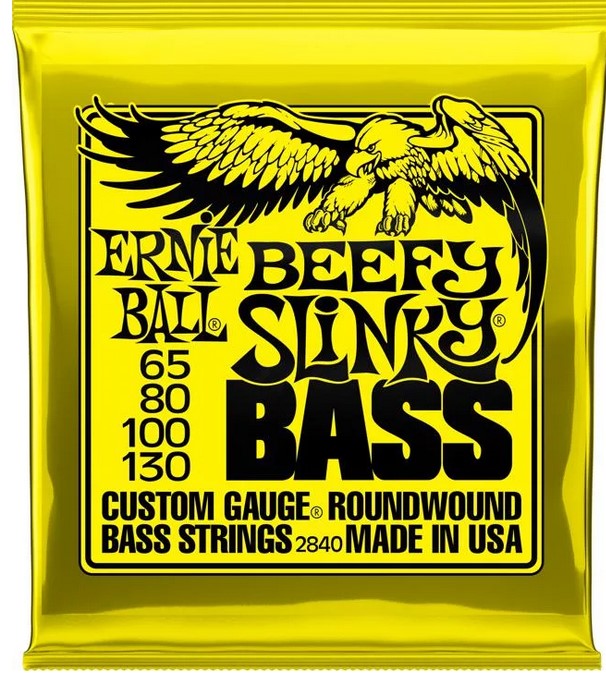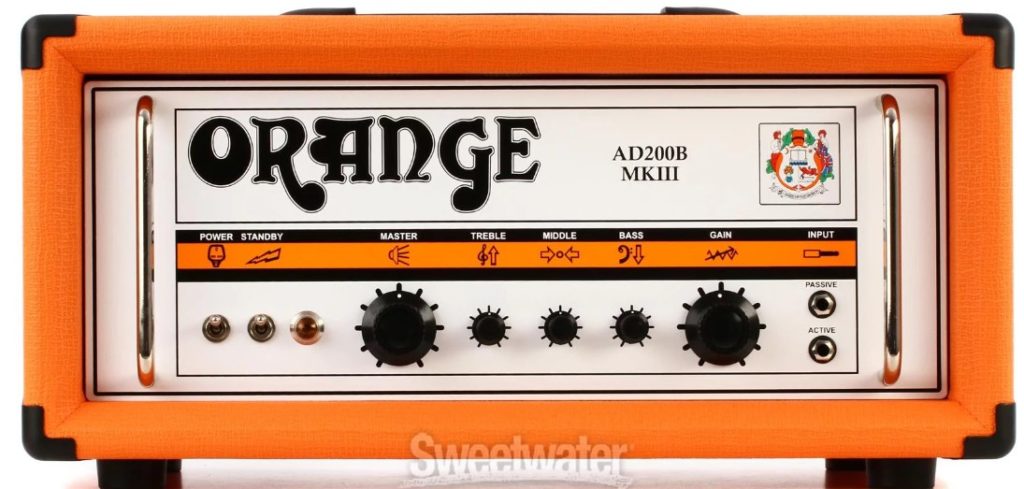Yesterday I talked about amplifiers that I’d use for testing and gigging. Today, it’s the turn of the bass guitars.
First off: I don’t think any electric guitar (lead or bass) should contain a battery — the so-called “active” mode — because a.) batteries go flat — usually at the worst possible time — and b.) battery performance degrades the longer you use one. If you want to juice up your guitar, use a booster or graphic equalizer pedal, or have an amp which includes those functions.
Of course, because I am an Olde Phartte who thinks that very little has happened since about 1990 which has actually improved the human condition, the above will come as no surprise.
Anyway, I’m going to list my favorite guitars according to two criteria: “everyday” (ones that could do 90% of anything I’d want them to do, and “specialist”, for a sound or purpose which the everyday ones physically could not do.
In this post I’m going to deal with bass guitars, because that’s the easiest and because I know more about them than should be allowed in decent society. Bear in mind, I want a clean, full sound out of my bass so that it will round out the sound of the band and give it a solid, earthy foundation, so the bass guitars I pick will perform that function, in spades.
Aside: any bass I play will have only four strings because it’s a bass guitar, not a lead guitar. Adding extra strings to a bass leads one into temptation to play the bass like a lead guitar (which is totally wrong), and of necessity, 5- and 6-stringed basses end up with thinner strings (so as to fit them all onto the neck), and thinner strings play with a more treble sound. My own strings of choice (Ernie Ball “Beefy”) were much thicker than a standard-gauge set, and when played with augmented bass through the graphic equalizer, I could move chairs across the dance floor.

Anyway, on to the guitars.
No surprises with my first choice: the one I played professionally for ten years, the Rickenbacker 4001S (now known as the 4003S):

No other bass sounds like the Rick, and no other bass plays like it, either. Also, although it’s not important, some of my favorite bassists played Rickenbacker: Chris Squire of Yes (who first turned me onto its sound), Paul McCartney and Roger Glover of Deep Purple. There are others, many others, but none of that matters. And the Rick has a stereo output option, which gives it more flexibility when it comes to amplification. (I sometimes used to run the bridge pickup through an effects pedal like a chorus or flanger, and the neck pickup clean, straight through a graphic equalizer, which kept the bass foundation steady whether I was using the other pedals or not.)
Anyway, if I were called on to test a new bass amp, I’d use the Rick and the Roland as the standard, then plug the bass into the new amp without touching any of the guitar’s controls (not that I ever did, anyway; only occasionally would I even use the pickup selector, and then only to mute the bridge pickup to get the right tone for dinner-dance music).
Recording engineers apparently hate the Rick because driven at full volume on the guitar (as I always did), its signal causes problems at the board — but that’s their problem. They do like my #2 choice (which is waaaaay below my #1), the Fender Precision, or P-bass, as it’s lazily termed.

The Precision is the Everyman of guitars: predictable, reliable and probably the foundation for more music since 1950 than any other bass guitar, especially as recording engineers love them. I prefer its neck to that of the Jazz bass, but to me its sound is kinda vanilla (with one exception that I’ll talk about in a moment).
For another exceptional-sounding bass, we go to my #3 choice, the Gibson Thunderbird:

As with the Rickenbacker, no other guitar sounds like the Thunderbird: it simply growls like a big angry dog, and I can pick out its sound immediately in any recording. Just listen to Martin Turner of Wishbone Ash in The King Will Come, and you’ll see why I love it. (The bass actually roars in at 1:15, if that matters to you.)
There are lots of other bass guitars out there, but those three will handle almost everything needed to produce a decent bass foundation — and most importantly, their sound is always absolutely consistent, which makes them perfect instruments to test amplifiers. I cannot tell you how many times I’d plug my Rick into a different amp, play maybe half a song or only a few blues or rock ‘n roll riffs, and know immediately whether that amp was worth a damn.
Aside: I once stepped into an established band to fill in for their regular bassist for a month — his work permit had expired and had to be reinstated — and while of course I played my own bass (the Rick), I had no problem using his 200w Orange amp and reflex cabinet rig, because it sounded, in a word, fantastic: halfway through the very first song, I knew the amp was top-class because my Rick sounded wonderful. I even made him an offer for the rig when he came back. He told me to piss off, quite rightly, because he knew what he had; and I’ve loved the clean sound and simplicity of Orange amps ever since.

But back to guitars…
Finally, we come to the “specialist” bass guitars, and that’s an easy one, because I’m talking about the fretless type, with which one can create a double bass sound even if, like me, you can’t play an upright double bass. This would be the fretless version of the Precision bass:

Fitted with smoothwound strings (instead of the typical roundwound) to eliminate the squeaks of the fingers changing position on the strings, and you have a smoooooth sound that works with jazz, rock and even classical. Then there’s Tony Levin…
When I grow up, I wanna play bass like he does.
And here’s Cathy Popper, who plays a Fender Precision bass:

…and the double bass:

Next week in Part III we’ll do the guitars.

I have no musical talent and know absolutely nothing about this stuff, but I’m finding it interesting. Thank you.
I can’t carry a tune with a forklift, but love music and am jealous of those with your gifts. I think you might like a listen to a band called Lake Street Dive — Bridget Kearney plays a mean upright bass, and the vocalist is outstanding. Thanks for these interesting posts!
I own a Rick 4003W that is gorgeous and is probably the best sounding bass. My only complaints are that: 1) If you have Popeye forearms like me, the binding on the top cuts into your arm making it the most uncomfortable bass I own (really would prefer a rounded edge); 2) The tailpieces on newer Ricks are garbage. The back lifts up; 3) There’s no comfortable place for a thumb rest if you prefer finger style like me.
I’ve got a Mexican made Fender Jazz that I really like. It has both passive and active pick ups for which is nice if you need a little more punch or if the battery dies. I’ve found active pickups just amplify my poor playing so I keep it mostly passive. I do have a 5 string Peavey because I love low notes.
As for strings, I got hooked on tapewound a couple of years ago and won’t use anything else. They’re not as bright as other strings but man, are they extremely comfortable to play.
When it comes to instruments I’ve always been a ‘wand chooses the wizard’ type. It has to feel right. It has to feel sexy.
I’ve had too many that seemed cool have this or that issue I hated. Like Johnny above, I’ve found Rickenbachers to be uncomfortable, even awkward to play.
The last two I had, for the longest time, were a Mexican Jazz bass and a Carvin lb70. I haven’t found much of a difference Mexican vs American fenders, especially when I’ll rip the pickups out and put better ones in it. The Carvin put every retail bass I’ve played to shame.
Since nearly every manufacturer has off shored production, then taken their formally normal models and made them boutique, you can buy a custom made, to your specs, instrument for the same price.
Hopeless amateur’s question: Does the shape of a guitar (regular or bass) make any significant difference in its sound? I note that most of those basses look like classic Stratocasters. John Entwhistle (at least in the video of his isolated bass track you posted a couple of months ago) played one that looked a bit like a lightning bolt, and Gene Simmons plays one that looks like a giant bloodaxe. I guess my question is other than the player, what is the most significant factor in how a bass sounds: materials, shape, electronics, or strings?
Only in acoustic guitars does body shape matter. In electric guitars, none of the body counts: it’s all in the pickups. (Brian May’s guitar was made from something like an old fence post, for example.)
As the wood matures and dries out, the guitar’s sound does change, sometimes quite substantially, which is why guitar makers may still have wood felled in the 1940s, 50s and 60s in their stock room.
Where the maturity of the wood really counts is in the neck, where the wood may dry out and cause it to warp, sometimes alarmingly. (The same is true of rifle stocks, of course, which is why stockmakers likewise have very old and dry wood in storage.)
Some woods have different resonances, and certainly some fretboard woods have a different “feel” to the fingers, hence the endless “rosewood vs. maple vs. birch” debates.
The shape really doesn’t matter, except for how it feels, which in turn can affect how an electric guitar sounds by virtue of how you play it.
The wood is incredibly important, even on electrics. Harder the material, better the resonance.
This is why you can’t buy a chinese knockoff les paul, slap on some top line pickups, and make it sound like a les paul. A les paul is (usually) solid mahogany. Chinese copies are who knows what. Last one I took apart appeared to be soft pine with an epoxy finish.
The better the neck, the less/no warp. This is why an early model fender maple neck will cost nearly as much as a new guitar.
Hardwoods reflect the sound better, which has an effect on string vibration. The neck itself resonates somewhat as well. So if it’s a soft wood, it’ll suck up vibrations, or not produce resonant tones, making the thing sound twanqy and shitty, with zero sustain. Not an issue as much if you are playing metal. But it’s still a huge factor.
This is why that $4K+ real les paul sings and will hold a note for as nearly long as you want it to.
Another huge factor is scale, which is measured from nut (top of the neck where the strings hit) to bridge (bottom, where the strings attach). Longer scale, brighter sound. This why a strat (25.5″ scale) sounds way different than a les paul (24.75″), a les paul having a warmer, fatter tone.
I have a 70’s Rickenbacker 480, the 6 string version of the bass. I hate it. Never play it. My American Strat, Takamine 12 string and LaPatrie classical are what I would grab in a fire (my P bass would probably survive a fire).
I’ve never been much of a bass player and gave my rig (70’s Fender PB and a Peavey amp) to my son a couple years ago, but I have played the 3 primaries you listed and without doubt the TBird is the most profound. The one I played belonged to a friend and it was connected to an Acoustic bass amp and a 27 cubic foot folded bass horn. WOW! That thing would change the molecular structure of the air and was a direct threat to the foundation of the building. Very smooth and inspiring.
Regarding the batteries. I have 2 guitars (6 string) that use batteries, 1 electric and 1 acoustic, and I stopped changing the batteries about 10 years ago. Just took em out and never put em back. Seemed they were always dead and frankly they were just unnecessary. Now that I’m old I require simplicity in most things.